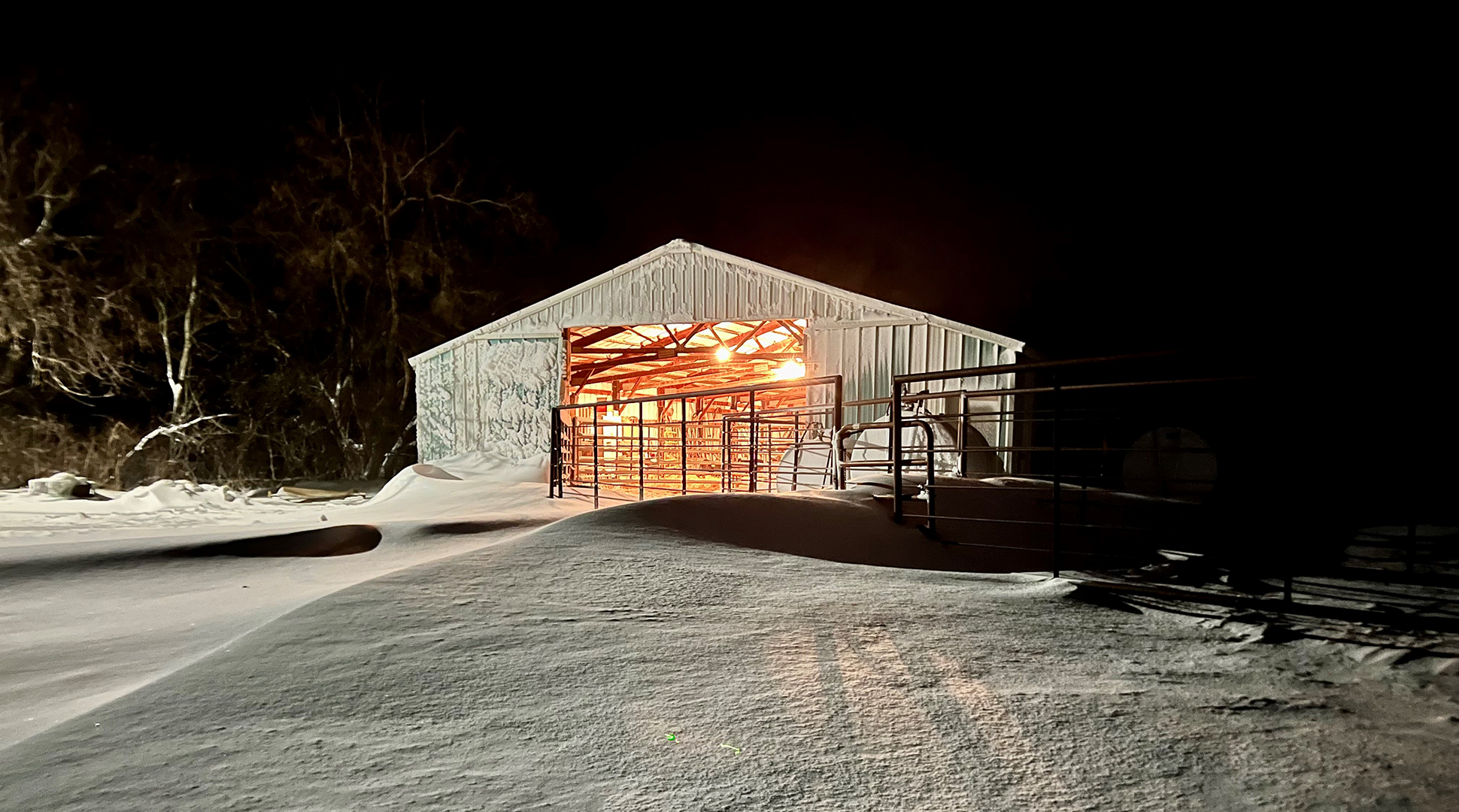By Megan Overby
WHEW! I don’t even know where to start. It was quite the month and one for the record books on our ranch. The calendar showed April, but it sure felt more like winter. We had blizzard conditions two weekends in a row, followed by a third weekend of ice-cold rain on our ranch near Binford.
Let’s just say Mother Nature wasn’t doing us any favors. But, a spring blizzard doesn’t stop calving season.
We begin calving on April 1 on our ranch because, typically, most of the snow has melted and the temperatures are warmer. That obviously wasn’t the case this year. However, ranchers never shy away from a challenge.
When we saw the forecast for a foot or two of snow, my in-laws, my husband, and I started preparing. We used straw and corn stalks for bedding and set up extra wind protection for the 320 cows expecting calves any day. Our crew on the ranch also turned the Quonset into a makeshift barn and pen system for cow/calf pairs.
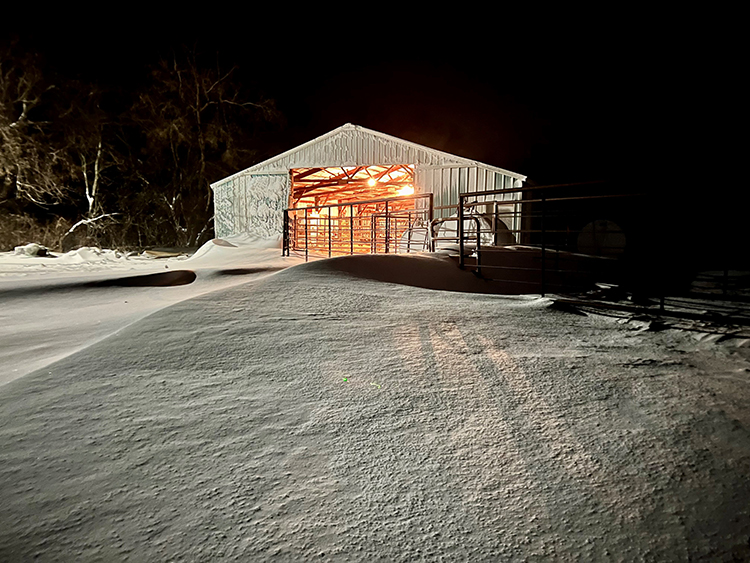
The Quonset in our farmyard was used a temporary place out of the wind and snow for cow/calf pairs.
Once we were prepared for incoming snow and rain, all we could do was wait.
It was an absolute whirlwind when the snow and rain finally came. Our ranch crew was checking for cows about to calf and newborn calves every hour when the storm was at its peak. We had six people checking day and night. There are so many stories I could share, but a couple stick out in my mind.
On the morning of April 23, I found a calf laying in the snow and mud basically lifeless. It was a life-or-death situation. We knew we had to get this calf warmed as quick as possible. After a warm soak in the tub, countless heat sources, corn syrup (for sugar to jumpstart its body), colostrum and five hours laying in our master bathroom, we had a live calf!
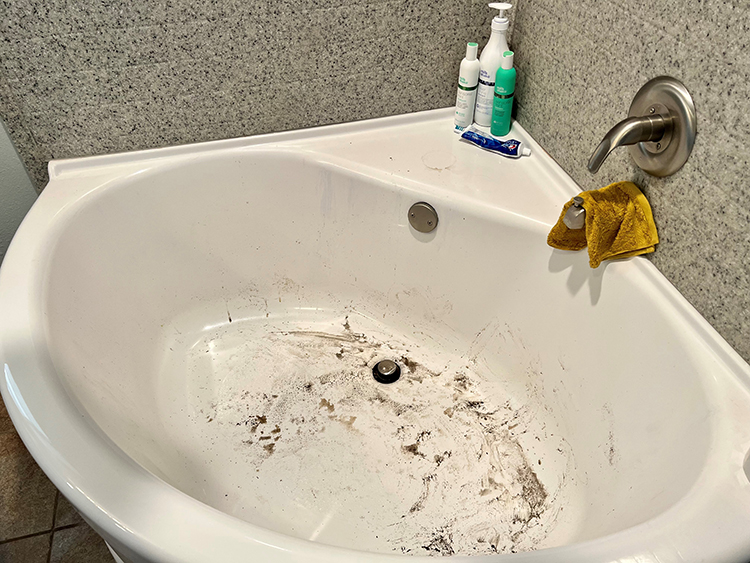
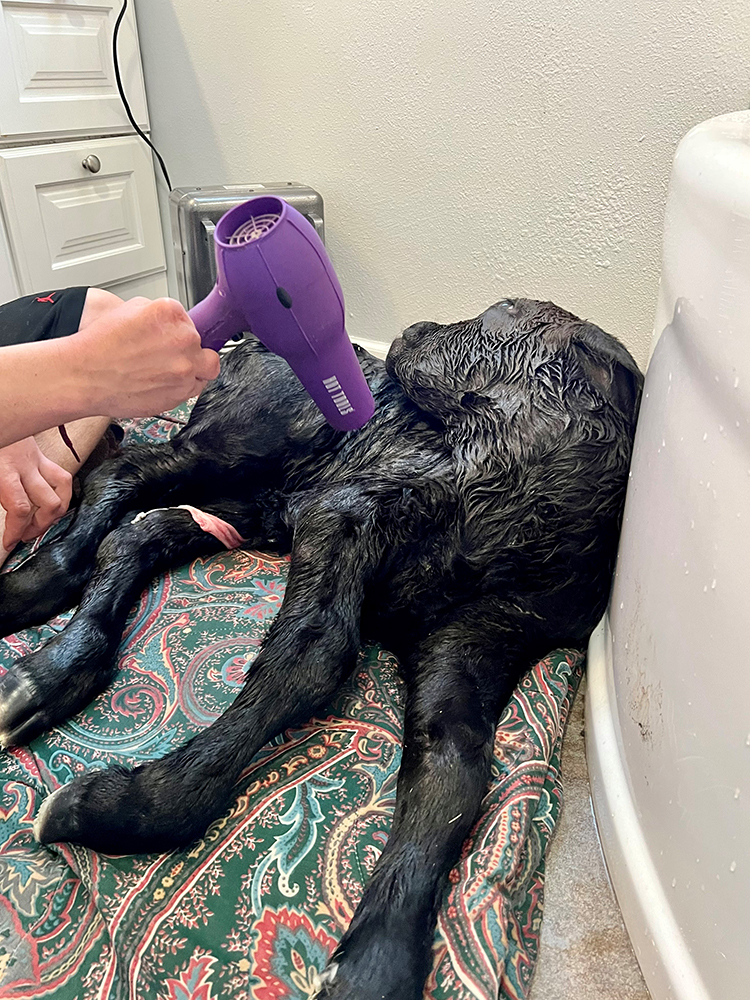
We used a blower dryer, along with two space heaters, to dry off and warm up calves quickly.
A little over one week later, we had more than two inches of rain mixed with some snow. Our master bathroom turned into a calf warming shack, once again. We gave a newborn calf a warm water bath to raise its internal body temperature slowly, but surely. In the middle of bath time, my father- and sister-in-law brought a three-week-old, 150-pound calf they found lying in a bale ring that was also very cold.
Even after a couple hours of trying to warm up the second calf, it still had little to no suckling reflex. So, my husband and I had to do something for the first time on our own – tube a calf. We thankfully were successful in getting the nutrients and electrolytes the cold calf needed into its stomach quickly and safely. It was nerve wracking for both of us, but the calf came back to life and had more energy in no time.
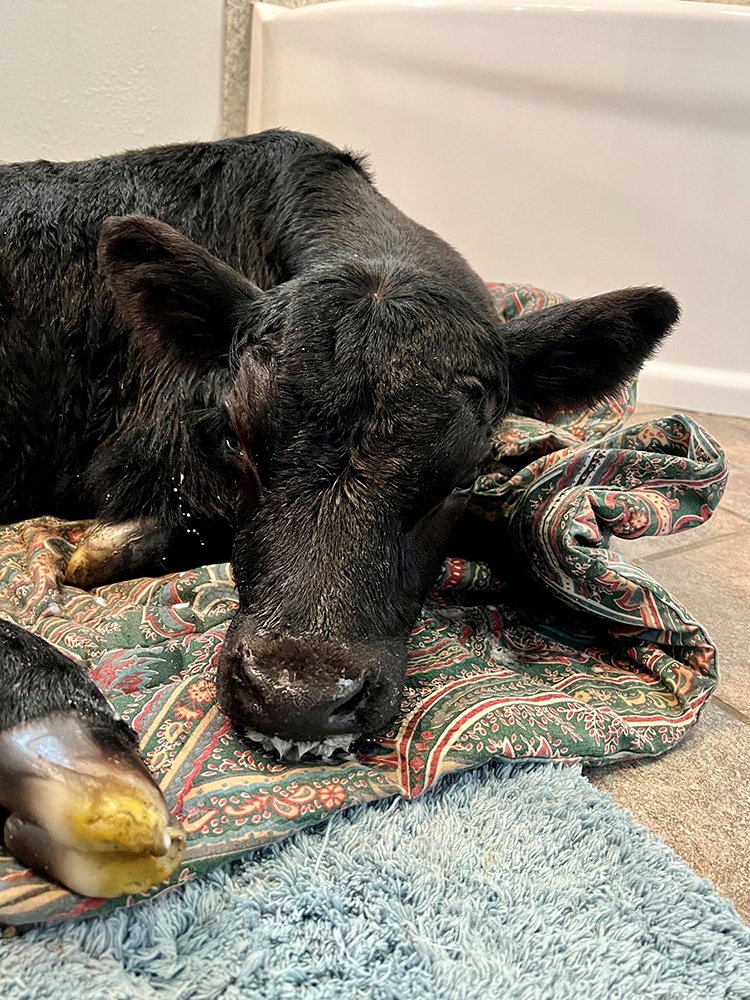
One of the calves we had in the bathtub was finally feeling better after warming up.
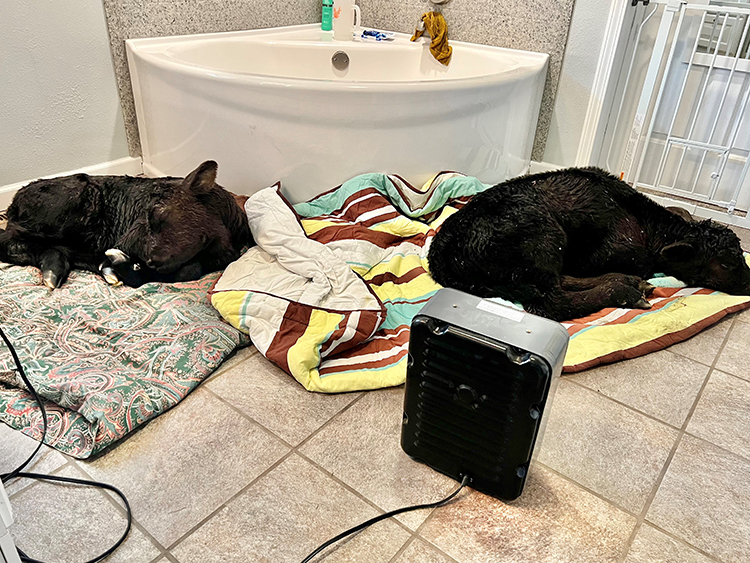
The master bathroom in our house turned into a warming shack for cold calves.
All of the calves brought into our master bathroom went back outside with their moms and were running around the next morning. This is the ugly side of ranching. But even when the job gets tough, we don’t give up. We fight until the end! Ranching isn’t always glamorous, but it sure is rewarding.
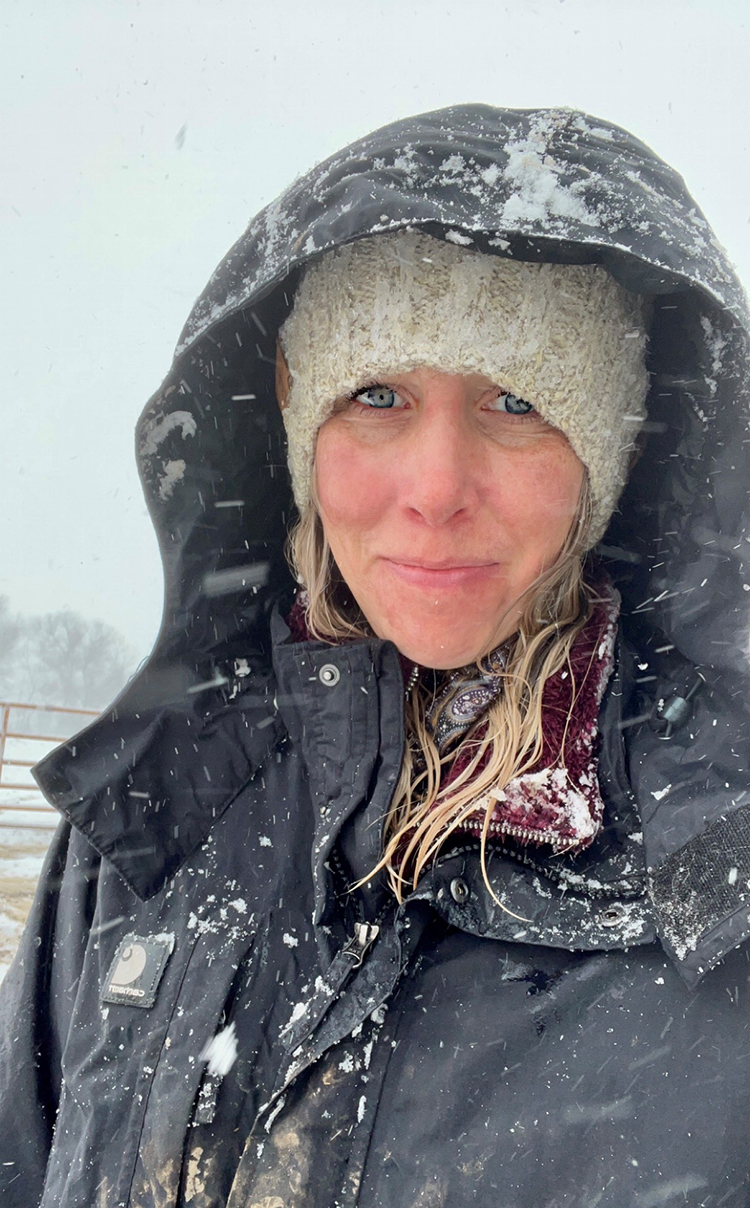
One of the many times I bundled up to go check for new calves so our crew could get them to the warm barn.
This is just one example of the hard work and passion that goes into raising livestock. We literally will do ANYTHING to save a life. Ranchers care so, so much. Stay tuned for part two. The WHY ranchers care for their cattle is coming soon!
Megan is the NDFB Northeast Field Representative and farms and ranches alongside her husband, Tanner, near Binford, North Dakota.
